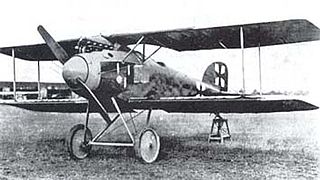
The Albatros D.II was a German fighter aircraft used during World War I. After a successful combat career in the early Jagdstaffeln, it was gradually superseded by the Albatros D.III.

The Aviatik (Berg) D.I, was a single-engine, single-seater biplane fighter that was developed and manufactured by the Austro-Hungarian branch of German aircraft company Aviatik. It was also known as Berg D.I or the Berg Fighter, because it was designed by Dipl. Ing. Julius von Berg, and to distinguish it from the D.I fighter built by the parent Aviatik firm in Germany.

The Austro-Daimler 6 was a series of Austrian six-cylinder water-cooled inline SOHC aero engines first produced in 1910 by the Austro-Daimler company.

The Hansa-Brandenburg C.I, also known as Type LDD, was a 2-seater armed single-engine reconnaissance biplane designed by Ernst Heinkel, who worked at that time for the parent company in Germany. The C.I had similarities with the earlier B.I, including inward-sloping interplane bracing struts. Like other early-war Austro-Hungarian reconnaissance aircraft, such as C-types of Lloyd or Lohner, the Type LDD had a communal cockpit for its crew.

The Lohner L was a reconnaissance flying boat produced in Austria-Hungary during World War I. It was a two-bay biplane of typical configuration for the flying boats of the day, with its pusher engine mounted on struts in the interplane gap. The pilot and observer sat side by side in an open cockpit, and both the upper and lower sets of wings featured sweepback.
The Aviatik (Berg) D.II, the prototypes of which were known as Aviatik 30.22 and Aviatik 30.38, was an Austro-Hungarian fighter plane prototype towards the end of the First World War.
UFAG, was an aircraft manufacturer formed by Freiherr Karl von Škoda in Budapest during World War I. It built aircraft of their own design as well as underlicence to Lohner and Hansa-Brandenburg. Aircraft produced by UFAG were allocated 60 series serial numbers for experimental and prototype aircraft and 61 to 69 for production aircraft.
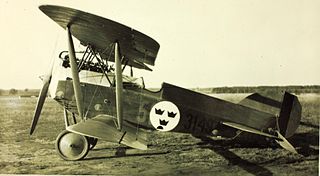
The Phönix D.I, with the D.II and D.III variants, was an Austro-Hungarian First World War biplane fighter built by the Phönix Flugzeug-Werke and based on the Hansa-Brandenburg D.I.
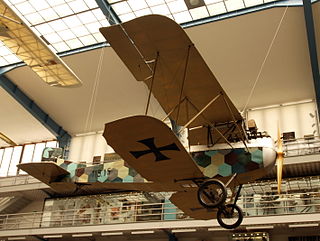
The Knoller C.II was a reconnaissance aircraft built in Austria-Hungary during World War I for use by the Austro-Hungarian army. It was a conventional biplane design with staggered wings, and seated the pilot and observer in tandem in an open cockpit. Like Knoller's preceding C.I design, the upper wing was swept back, but not as far as it had been on the earlier aircraft. The structure was wooden throughout, with the wings skinned in fabric and the fuselage in plywood. The interplane struts were made of steel and arranged in a warren truss configuration.
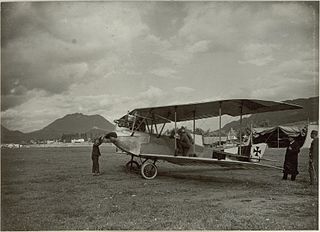
The Lloyd C.I was a reconnaissance aircraft produced in Austria-Hungary shortly before and during the First World War, and which formed the basis for a number of other closely related types. It was the Lloyd company's own design, but reflected the DFW designs that Lloyd had previously been building under licence, in particular, in its swept-back, "Pfeil" ("arrow")-style wings. Apart from this feature, it was a conventional biplane design for its day, with staggered wings of unequal span and accommodation for the pilot and observer in tandem, open cockpits. The fuselage was built from welded steel tube, and was covered in fabric. A small load of bombs could be carried internally, to be released by the observer.

The Lloyd C.II and its derivatives, the C.III and C.IV were reconnaissance aircraft produced in Austria-Hungary during the First World War. They were based on the Lloyd company's pre-war C.I design, and like it, were conventional biplanes with swept-back wings.
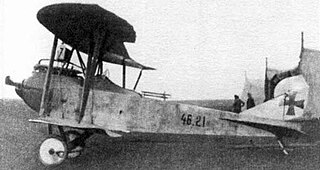
The Lloyd C.V was a reconnaissance aircraft produced in Austria-Hungary during the First World War. It was a departure from Lloyd's previous reconnaissance types, which had all been based on a pre-war design. The C.V was a more compact and streamlined aircraft with an unusual wing structure.

The Lohner B.I was a military reconnaissance aircraft produced in Austria-Hungary during World War I. As Lohner strove to perfect the design, a variety of increasingly powerful engines were fitted, reflected in a range of military designations from B.II through to B.VI until the definitive B.VII was finally produced. This last version was also produced in an armed variant, designated the C.I.

The unarmed Lohner B.VII and its armed derivative the C.I were military reconnaissance aircraft produced in Austria-Hungary during World War I. They were the ultimate developments in a family of aircraft that had begun with the B.I prior to the outbreak of war, and were the first members of that family that proved suitable for front-line service during the conflict. Like their predecessors, the B.VII and C.I were conventional biplanes with characteristic swept-back wings.

The Phönix C.I, given serial numbers in the Phönix 121 range, was an Austro-Hungarian First World War reconnaissance and general-purpose Biplane built by Phönix and Lloyd.

The Lohner Type AA were a series of prototype fighters built during World War I. The program would eventually be cancelled due to inherent instability concerns of the design.
The Oeffag G , sometimes known as the Oeffag Type G or Oeffag-Mickl G, was a three-engined reconnaissance flying boat built in Austria during the First World War and deployed by the Kaiserlich und Königlich Seefliegerkorps.

The UFAG C.I was a military reconnaissance aircraft produced in the Austro-Hungarian Empire during World War I, by the Ungarische Flugzeugfabrik Abteil Gesellschaft (UFAG). It was introduced in April 1918, and was widely used on the Italian Front in the final months of World War I.
The Phönix 20.24 was a prototype German fighter plane built in the last months of World War I.















